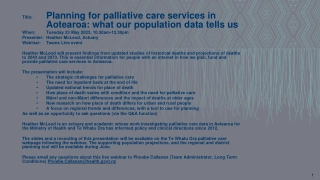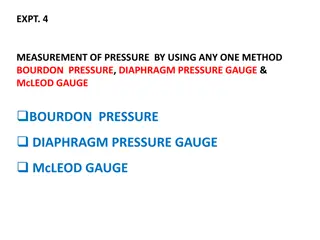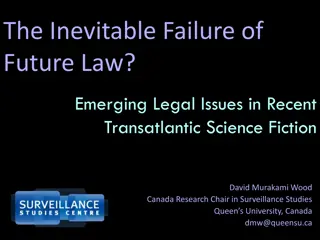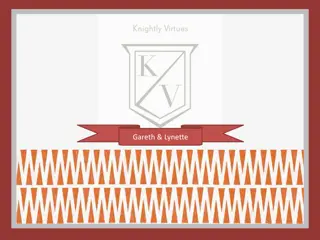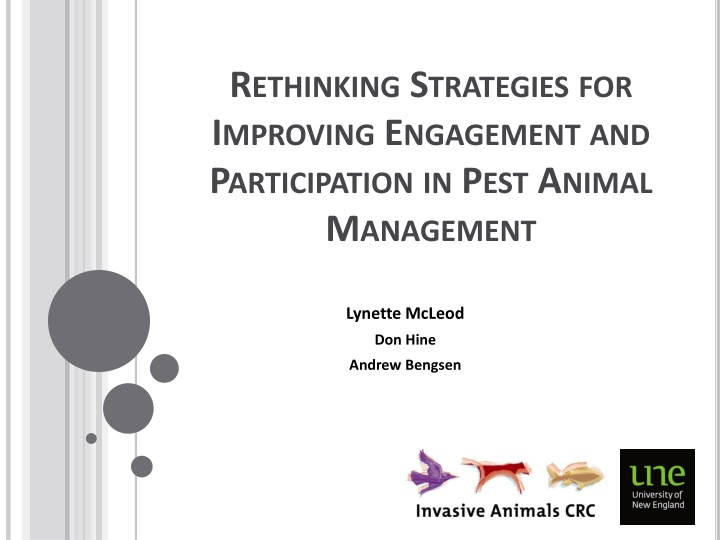
Effective Strategies for Community Engagement in Pest Animal Management
Improving engagement and participation in pest animal management is crucial for successful outcomes. This text discusses rethinking strategies, defining problems in human behavioral terms, identifying influential factors of behavior performance, and developing behavior change strategies. Learn about effective community action, intervention strategies, and reducing institutional barriers to citizen action in this comprehensive guide.
Download Presentation

Please find below an Image/Link to download the presentation.
The content on the website is provided AS IS for your information and personal use only. It may not be sold, licensed, or shared on other websites without obtaining consent from the author. If you encounter any issues during the download, it is possible that the publisher has removed the file from their server.
You are allowed to download the files provided on this website for personal or commercial use, subject to the condition that they are used lawfully. All files are the property of their respective owners.
The content on the website is provided AS IS for your information and personal use only. It may not be sold, licensed, or shared on other websites without obtaining consent from the author.
E N D
Presentation Transcript
RETHINKING STRATEGIES FOR IMPROVING ENGAGEMENT AND PARTICIPATION IN PEST ANIMAL MANAGEMENT Lynette McLeod Don Hine Andrew Bengsen
IA CRC PROGRAM 4: FACILITATING EFFECTIVE COMMUNITY ACTION Effective community engagement practice increase participation in coordinated actions develop partner capacity to work with the community Triggers for effective action design, implement, evaluate new intervention strategies improving communication strategies Reducing institutional barriers to citizen action www.invasiveanimals.com/research/phase2/community-engagement/
Management is a series of continuing and related activities to achieve defined goals/objectives by working with and through people
4 KEY STAGES FOR DEVELOPING BEHAVIOUR CHANGE STRATEGY: OVERVIEW Define problem in human behavioural terms Identify factors that influence behaviour Implement and evaluate Select appropriate intervention strategies
DEFINETHE PROBLEMIN HUMAN BEHAVIOURAL TERMS Define the issue What is the issue, why is it an issue, who is affected? Understand the underlying behaviours Identify specific human behaviours that contribute to the issue and that will resolve the issue, and who is involved in these behaviours Select the target behaviour(s) Identify the target audience To be effective, behavioural change needs to deal with specific behaviours and actions in a given context
IDENTIFYINFLUENTIALFACTORSOFBEHAVIOURPERFORMANCE Changing peoples behaviour involves positively influencing those factors that inspire people to act and decreasing or removing those factors which impede them CAPABILITIES OPPORTUNITIES MOTIVATIONS Awareness Physical Values Know how Economic Beliefs Physical skills Technological Attitudes Cognitive/personal skills Social Personal norms Confidence Cultural Emotions Institutional Social norms Response efficacy
HUMANDECISION-MAKING ? AUTONOMOUS COGNITIVE Reasoned Intuitive Rational Habitual Emotional Cost/Benefit Heuristics
INFLUENCEOFSOCIALNORMS descriptive norms (what people do) tend to be more influential than injunctive norms (what people are told they should do)
HUMAN MOTIVATION Different forms of motivation regulation (internalisation) influence the effectiveness and sustainability of behaviour change Internalisation can be best understood as a spectrum with varying degrees from external to internal regulation External Introjected Identified Integrated Intrinsic Correction does much but encouragement does more Goethe
KNOW YOUR AUDIENCE Not everyone views pest animal problems in the same way Distinct audience segments may reflect different values, beliefs, knowledge and current behaviours The nature of these audiences needs to be understood if engagement is to succeed, and participation improved.
AUDIENCESEGMENTATION - STAGESOF CHANGE STAGE OF CHANGE INTERVENTION GOAL Precontemplation Increase awareness of invasive animal issues Engage emotions to capture attention Contemplation Increase motivation to change Highlight costs and the benefits. Preparation Increase self-efficacy and confidence Reinforce beliefs that change is possible & desirable Help users plan for change Action Provide real-time support and advice Highlight common pitfalls and how to avoid them Maintenance Provide feedback on progress and constructive advice for continuous improvement Provide reminders and prompts to help ensure desired practices continue
DESIGNTHEINTERVENTIONSTRATEGY Select appropriate behaviour change technique that addresses the identified drivers and barrier Select appropriate and engaging message that reaches the audience (communication strategy) Select an appropriate mode of delivery Any strategy should be affordable, practical, cost-effective, acceptable, fair and have no adverse side-effects
SELECTINGAPPROPRIATETECHNIQUES: LINKINGBEHAVIOURCHANGESTRATEGIESTOBARRIERS/DRIVERS Strategies Capabilities Opportunities Motivations Persuasive communication Education Training Modelling Enablement Environmental restructuring Incentivisation Restrictions Coercion
Behaviour change technique Persuasion Education Training Modelling Enablement Env. Restructure Incentives Restriction Coercion Issue/behaviour information Consequence information Threats Framing Credible messenger Debunking misinformation Pros and cons Goal setting Commitment Social comparison Social approval Feedback Behaviour instruction Demonstration Covert learning/self-belief Prompts/cues Social support Improved methods Physical restructuring Social restructuring / rules Punishment Rewards / subsidies Knowing is not enough; we must apply. Willing is not enough; we must do Goethe
COMMUNICATION STRATEGY o Content should be easy to read, well presented and use appropriate language. o Content should tell the user what they need to do next with clear directions to the next steps Selecting the right message will help ensure that your message is noticed, processed and acted upon
www.pestsmart.org.au/ behaviourally-effective-communications-for-invasive-animals-management/
MODEOF DELIVERY Delivery mode Example Best for Distance Large group Mass media (outdoor, broadcast, digital, print) Reach large audiences Increase awareness & knowledge Create receptivity to new idea Individual Digital media (helpline, program or app) Increase knowledge Provide individual assistance Improve skills and confidence Face-to-face Group Peer support groups, work/school programs Motivate with social norms Help overcome strong barriers Introduce complex actions Individual Home visits, opinion leaders, word of mouth Help overcome specific barriers Provide instruction and assistance Demonstrate ease of adoption
IMPLEMENTANDEVALUATE Pilot Implement Evaluate the behavioural outcomes (not just outputs) the processes used to design, develop and deliver the intervention
TAKE HOME MESSAGES Think in human behavioural terms Understand your target audience (don t assume) Use appropriate techniques for specific contexts Target communication and delivery strategies Evaluate both behavioural and process outcomes one size does NOT fit all

